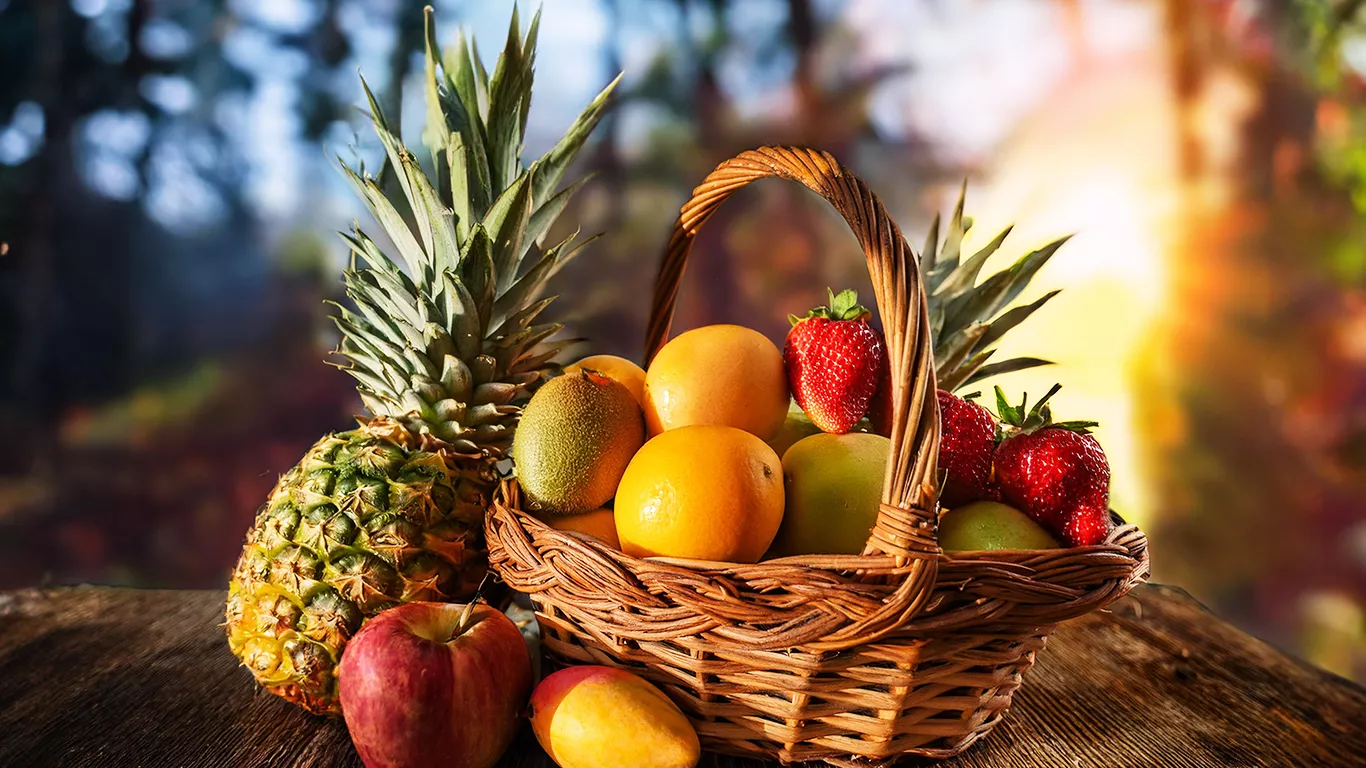6 Fun Facts About Fruits You Probably Didn’t Know
Who doesn't love a bowl of freshly chopped fruit for breakfast? The elements, the flavours and the colours, all unique and equally vibrant. How about we indulge you in a few fun facts that make these nature’s sweet treats a little more than the sources of vitamins and minerals we know them to be? These interesting facts about fruits will have you on the edge of your seats, wondering if you truly knew the elements in your fruit bowl at all. We peel back the layers from some of your common fruits to reveal quirky and fun facts about mangoes, apples, oranges; you name it!
6 Interesting Facts about Fruits You Need To Know
Stay till the end as we unearth some fun facts about mangoes, strawberries and more, in this list of amazing facts about fruits:
1. Mangoes: An 'Interesting' Family Tree
By the time summer hits the country, mangoes make their resurgence into the markets. We relish this sweet fruit with awe and childlike wonder, at times, eating too much too fast. However, did you know that the tropical fruit has a surprising yet unexpected family? Yes, it’s true mangoes belong to the anacardiaceae family. This famously includes cashews, pistachios, and the poison ivy. The infamous plant is known for its allergic reactions experienced by an individual upon contact. Interestingly, this is caused by the compound called urushiol, which is found in mangoes as well, particularly in their peel and sap. Mango juices, however, provide a safe and delightful way to enjoy the essence of this tropical fruit without any of the potential irritants. Hence, it is recommended that individuals maintain caution around a mango tree as the compound may act as an irritant in sensitive individuals.
2. Pineapple: Multiple Fruits in One
After mangoes, pineapples are also known as the common tropical fruit. When you get ripe pineapple from the market, the first thing you do is cut the fruit to remove the spiky exterior. As you do so, you come in contact with black or brown 'eyes' on the surface of the fruit. This is where it gets interesting: these little eyes or segments represent individual flowers. Yes, and the fleshy part we normally feast on is the result of these flowers growing and merging together as they develop into a fruit. Pineapple juices, made from this delicious fruit, offer a refreshing way to enjoy its unique sweetness and tang. This little fun fact about pineapples makes it a collective fruit rather than one single one.
3. Apple: The Secret about Apple seeds
One of the most widely consumed fruits across nations is the mighty apple. We all know how nutritious the fruit is or how closely they belong to the rose family. However, these interesting facts about apples will have you in a fix, for at least a short while. The fruit, apple, in particular apple seeds, contains a tiny amount of amygdalin. Now before you swear off apples; another thing to note is that our body can only access amygdalin if the seeds are crushed meticulously. Apple juices, made from the finest varieties, offer a safe and delicious way to enjoy the fruit's nutritional benefits without any concerns about seeds. Moreover, a single apple seed or rather eight contains minimal amounts of the compound, to pose a threat to an individual even having their second apple for the day.
4. Orange: Unique Journey Documented in a Fruit
We adore orange for its tangy flavour and antioxidant-rich vitamin C content. It is used in a number of fruit juices, salads, desserts, and so on. Among these fascinating fun facts about oranges, one remains supreme. That is, a single orange showcases the fruit's journey from blooming to fruition. Once you open an orange, you will notice individual segments which are in fact modified leaves that have evolved into such to hold the seeds of the fruit. Orange juice, freshly squeezed from these vibrant fruits, captures their tangy essence in every sip. Interesting right? Moreover, the number of segments in a fruit can be determined by several factors such as environmental conditions, varieties and more. This signifies that each orange you consume is as unique as the next one.
5. Litchi: Balance between Sweet and Strange
Who doesn’t love Litchis? It is a revered fruit for its translucent, white flesh and delicate, sweet flavour. While the flesh of the fruit is completely safe to consume, the seeds, however, are another story altogether. Litchi seeds famously contain a toxin called hypoglycin A. When consumed in large quantities, this amino acid may affect an individual’s ability to produce glucose and potentially lead to a condition known as hypoglycaemia or low blood sugar complications. Litchi juice, extracted from the ripe and fleshy part of the fruit, offers a refreshing way to enjoy its sweetness without any concerns about the seeds. Hence, it is always preferred to consume the fleshy part of ripe litchi to get the most nutrients out of the fruit.
6. Strawberries: The Bright White Fruit?
Yes, you read that right! When we think of a plump strawberry, we often imagine a ripe, red berry with a sweet and sour taste. However, while the red varieties are most common, white strawberries exist too. Take pineberry and white soul, for instance. Some cool facts about these strawberries are that they have hints of sweet-tarty pineapple and a floral aroma, which balances their flavour profile. They can be alternately used than the common strawberry to add a unique take on your desserts.
Through this journey, we learnt some fun facts about mangoes, apples, pineapples, and more. Uncovering these fascinating fun facts about fruits helps us understand the fruits better and view them as more than just sources of nourishment. Each variety tells a story that helps us truly appreciate nature's delicious treats.
B Natural Juices provides a range of nutritious, ready-to-drink fruit juices. Made from real fruits without added preservatives, B Natural juices offer the natural goodness of fruits in every sip, making it easy to enjoy delicious fruit juices anytime.
FAQ
1. Who Named Fruit?
The word "fruit" originates from the Latin word "fructus," meaning enjoyment or produce. It was adopted into Old French as "fruït" and later into English, evolving to represent edible plant products.
2. What Is The Oldest Fruit?
The fig is considered one of the oldest cultivated fruits, with evidence of its cultivation dating back over 11,000 years in the Middle East. It holds historical and cultural significance across civilizations.
-0102?fmt=webp-alpha)





